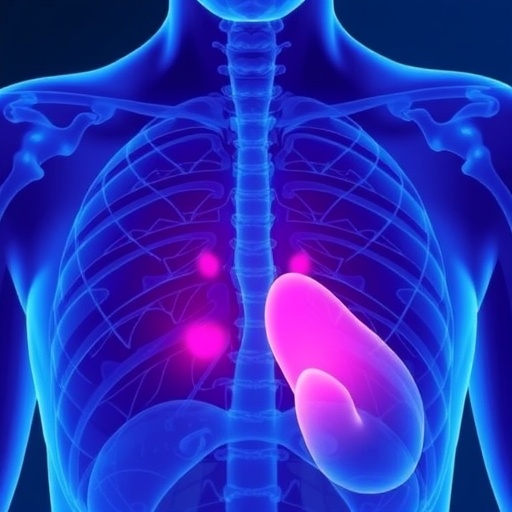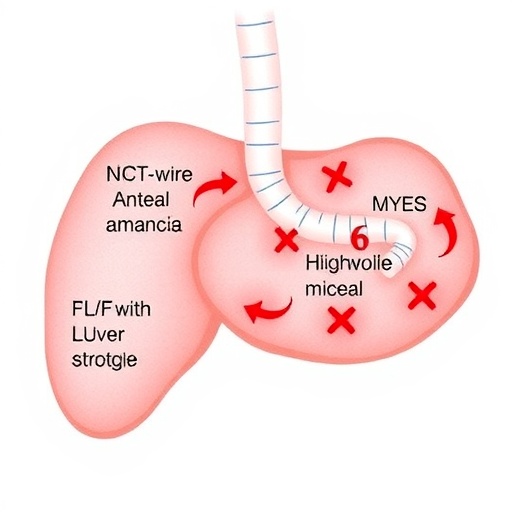A groundbreaking study published today in Lancet Primary Care sheds new light on the complexities and diagnostic potential of the Suspected CANcer (SCAN) Pathway, a novel NHS initiative designed to accelerate the identification of cancers presenting through non-specific symptoms. Conducted over six years and involving more than 4,800 patients between 2017 and 2023, this prospective observational cohort study conducted by the University of Oxford’s Nuffield Department of Primary Care Health Sciences provides the most comprehensive analysis to date of patient outcomes, serious disease diagnoses, and incidental findings associated with this cutting-edge diagnostic approach.
SCAN was originally conceived in Oxfordshire as a collaborative effort among NHS England, Cancer Research UK, and Macmillan Cancer Support, with the explicit goal of addressing diagnostic gaps for patients whose symptom presentations do not meet traditional urgent cancer referral guidelines. Since becoming standard care across the region in 2020, SCAN has been incorporated into the NHS’s wider network of Rapid Diagnostic Centres, marking a pivotal shift in UK cancer diagnostics. By harnessing a more flexible and symptom-agnostic referral system, SCAN endeavors to catch elusive malignancies earlier, when treatment is more effective and cost burdens are substantially lower.
Central to the study’s findings is that 8.8% of patients referred through SCAN were ultimately diagnosed with cancer. The most prevalent malignancies detected included lung, pancreatic, breast, non-Hodgkin lymphoma, and colorectal cancers. Such figures underscore the pathway’s ability to identify cancers that frequently evade early detection due to ambiguous or non-specific symptomatology. This is particularly crucial given that early-stage detection dramatically improves survival rates, and by extension, patient prognosis, while reducing the financial strain on healthcare systems linked to late-stage treatment.
Intriguingly, the investigation also revealed that beyond oncological diagnoses, a significant portion—10.9%—of patients were found to have serious non-cancer conditions. These findings emphasize the pathway’s vital role in uncovering a spectrum of pathologies that may present with overlapping or indistinct clinical signs, ranging from inflammatory disorders to other life-threatening illnesses. The inclusion of such diagnoses in SCAN’s evaluation footprint presents important implications for the holistic management of complex patients, advocating for a broad clinical vigilance during these diagnostic assessments.
Perhaps most striking was the discovery of clinically significant incidental findings in 19.3% of patients. Incidental findings refer to unexpected abnormalities unrelated to the initial diagnostic query but clinically relevant and potentially requiring medical intervention. This high rate speaks to the inherent complexity of executing non-specific symptom pathways and the consequential demands placed on healthcare services to navigate and manage uncertain or unexpected results without detrimentally impacting resource allocation.
From a technical standpoint, the study highlighted several symptom and biomarker correlations that significantly elevated the probability of a cancer diagnosis. For instance, an abnormal CA125 biomarker level—a protein commonly elevated in certain cancers—demonstrated a positive predictive value (PPV) of 29.7%. This insight affirms the critical role of integrating biomarker data within symptom pathways and refining triage algorithms, enhancing diagnostic precision. The correlation between biochemical abnormalities and cancer risk is an invaluable tool for clinicians, helping prioritize patients for urgent investigation.
Dr. Claire Friedemann Smith, lead researcher and joint first author of the study, emphasized the dual-edged nature of SCAN’s broad investigative approach. She noted the pathway’s unique capacity to detect otherwise hard-to-diagnose cancers while recognizing the burden incidental findings place on healthcare infrastructure. Their occurrence necessitates a delicate balance between maximizing early cancer detection and preventing healthcare systems from becoming overwhelmed with follow-ups and additional investigations. These insights are paramount for policy reform, highlighting the need for calibrated resource distribution aligned with clinical benefit.
An additional strength of this study lies in its longitudinal design, tracing the SCAN pathway’s evolution from pilot stages to full NHS integration. This temporal dimension permitted an evaluation of changing patient demographics, diagnostic outcomes, and pathway efficiencies over time, yielding valuable epidemiological trends. Observing how clinical outcomes and system performance shift with scaling provides a roadmap for optimizing the implementation of similar non-specific symptom pathways both within the UK and internationally.
The integration of SCAN as an NHS standard of care highlights a broader shift towards patient-centric, biomarker-informed diagnostics, moving away from rigid symptom checklists towards more dynamic, inclusive referral systems. Nevertheless, the data also illuminated a lack of significant cancer stage shift in diagnosed patients, prompting critical reflection on whether current pathway designs sufficiently expedite diagnosis to earlier, more treatable stages. This recognition fuels a need for continued research and pathway refinement to maximize the clinical impact of non-specific symptom evaluations.
Dr. Brian D Nicholson, co-lead author, pointed to the pressing challenge of deciphering the natural history and clinical significance of incidental findings detected during pathway investigations. Many incidental discoveries may represent previously undiagnosed serious diseases warranting treatment, but the pathways to effectively stratify and manage these cases remain to be optimized. Ongoing research leveraging this extensive SCAN dataset aims to inform nuanced clinical guidelines, balancing vigilant detection with the avoidance of unnecessary interventions.
From a health economics perspective, the study underscores the urgent requirement to assess the cost-effectiveness of non-specific symptom pathways such as SCAN, particularly in light of the considerable investigative workload generated by incidental findings and non-cancer diagnoses. Early cancer detection undeniably offers substantial benefits; however, understanding the financial implications and system-wide impact of pathway scaling is critical to ensure sustainability. Tailoring future pathway developments to prioritize value-based care and resource stewardship remains a key aim.
Beyond clinical care, the SCAN Pathway presents a uniquely rich repository of longitudinal patient data and biological samples available for research purposes. This resource offers unprecedented opportunities for biomarker discovery, validation of artificial intelligence models, and broader explorations into non-specific symptomatology. Researchers developing predictive algorithms or seeking to delineate complex diagnostic pathways can leverage SCAN’s curated data trove to accelerate innovations and transform diagnostic paradigms globally.
Institutions and policymakers observing NHS England’s progressive adoption of SCAN-inspired models internationally should heed the study’s nuanced findings. While these pathways promise earlier detection of elusive cancers, they simultaneously demand significant clinical capacity and careful management of incidental discoveries to avoid exacerbating systemic pressures. Strategic investment in training, infrastructure, and multidisciplinary collaboration will be essential to realize the full potential of these diagnostic innovations.
In conclusion, this extensive six-year prospective study offers compelling evidence supporting the SCAN Pathway’s role in identifying cancers manifesting through non-specific symptoms and highlights critical challenges involving incidental findings and diagnostic complexity. As healthcare systems worldwide grapple with improving early cancer detection amidst finite resources, SCAN provides an instructive exemplar of both the promise and pitfalls inherent in broad-spectrum diagnostic approaches. Further research into optimizing pathway algorithms, managing incidental findings, and enhancing cost-efficiency will be decisive in shaping the future landscape of cancer diagnostics.
Subject of Research: People
Article Title: Patient characteristics, serious disease diagnoses, and incidental findings in individuals with non-specific symptoms referred to the Suspected CANcer (SCAN) Pathway: a prospective cohort study in England
News Publication Date: 10-Sep-2025
Web References:
The Lancet Primary Care Article
DOI Link
Keywords: Cancer screening, Cancer patients, Oncology
Tags: cancer diagnosis pathwaycomprehensive cancer diagnostics analysisdiagnostic gaps in cancer referralsearly cancer detection strategiesflexible cancer referral systemNHS cancer initiativesnon-specific cancer symptomsobservational cohort study on cancerpatient outcomes in cancer careRapid Diagnostic Centres UKSuspected CANcer SCAN PathwayUniversity of Oxford cancer research





